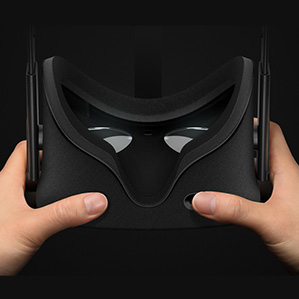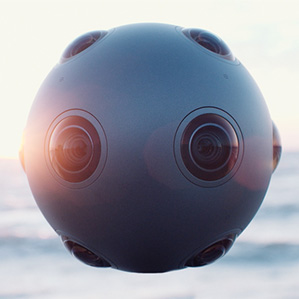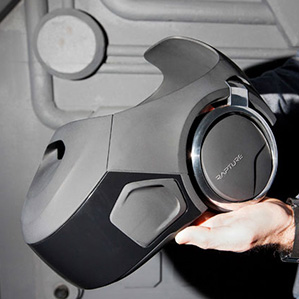Four Important Things to Expect in Virtual Reality in 2016

Virtual reality has grown immensely over the past few years, but 2016 looks like the most important year yet: it will be the first time that consumers can get their hands on a number of powerful headsets for viewing alternate realities in immersive 3-D.
To get a sense of how quickly virtual reality is moving toward the mainstream, consider this: in early January, more than 40 exhibitors will be showing off their technology in a dedicated “Gaming and Virtual Reality Marketplace” at the International Consumer Electronics Show in Las Vegas. The trade group that puts on the show, the Consumer Electronics Association, says this is a 77 percent increase over what it saw in 2015.
With all that in mind, what will really matter? Here’s what we’re watching.

High-Powered Headsets
Several virtual-reality headsets are expected to hit the market this winter and spring. Facebook-owned Oculus’s first consumer headset, Rift, is slated for release in the first quarter of the year, while the HTC Vive—a headset created by smartphone maker HTC and video-game company Valve—is set to be available to consumers in April. Sony, meanwhile, is building its own headset, called PlayStation VR, which the company says will be released in the first half of the year.
The price tags for these headsets haven’t yet been announced, and buyers may also have to factor in the cost of a compatible computer (or, in the case of the Sony headset, a PlayStation 4), since all three of them will need to be physically connected to one of these in order to work. Rift has released details about PCs that will work with it (they start at $949), but HTC hasn’t yet said what the requirements will be for Vive-compatible PCs.
Despite the fact that few headsets are yet on the market, the Consumer Electronics Association forecasts sales of 1.2 million in 2016.

A New Breed of Games
Companies are developing a number of games and other experiences to go along with these new virtual-reality headsets.
A silly but fun game from Owlchemy Labs, called Job Simulator, will be available for Oculus’s Rift, HTC’s Vive, and Sony’s PlayStation VR. The game, which I got to try out at Oculus’s developer conference in the fall, is set in a future where robots have taken over all work, and it invites the player to simulate what it’s like to perform jobs like working in an office or as a chef.
And Ubisoft Entertainment, which makes the Assassin’s Creed video games and many others, expects to release Eagle Flight in 2016. The game lets you fly around above Paris, taking on the perspective of an eagle.
The games won’t all be new: the Windows 10 version of Minecraft, the extremely popular building-block game, will be coming to Rift in the spring, as well as to Samsung’s Gear VR, an existing $100 headset developed with Oculus that requires a Samsung smartphone to serve as its computer and display.

Better Camera Options
Virtual reality isn’t all about computer-generated graphics; a number of companies are making live-action content, too. There aren’t too many options out there for filmmakers, though, and some companies are coming out with cameras that they hope will help.
Nokia expects to start selling Ozo, a nine-pound, mostly spherical video camera with a long protuberance on its back (for its special combined battery and recording cartridges), for $60,000 sometime in the first quarter. And Lytro—which hasn’t had much success with a camera that lets you change the focus of images after they’ve been shot—says it’s also building a professional-grade spherical camera, called Immerge, that will be about the size of a beach ball and cost “in the hundreds of thousands of dollars.” It is expected to be available within the same time frame.

Beyond the Living Room
Though much of the virtual-reality action in 2016 is expected to focus on the living room, a startup in suburban Utah is bringing it into a much larger space by opening a virtual-reality entertainment center called the Void later in the year.
Located in Pleasant Grove, Utah, the Void will outfit visitors with a headset and other gear, and then let them loose in groups of six to eight people to roam a 60-by-60-foot stage filled with a maze of physical walls and effects like heat and sprays of water that match up with a range of images you’ll see on the headset.
The Void is already operating a demo stage in neighboring Lindon, Utah, where visitors pay $10 apiece for experiences that last about six or seven minutes; when the real thing opens in August or September, the company plans to charge about $34 for a 20-minute experience.
More traditional theme parks may also add virtual-reality technology in 2016, too. Ontario-based amusement park Canada’s Wonderland, for example, reportedly plans to let users pay an extra fee to wear headsets on one of its roller coasters.
Keep Reading
Most Popular
Large language models can do jaw-dropping things. But nobody knows exactly why.
And that's a problem. Figuring it out is one of the biggest scientific puzzles of our time and a crucial step towards controlling more powerful future models.
How scientists traced a mysterious covid case back to six toilets
When wastewater surveillance turns into a hunt for a single infected individual, the ethics get tricky.
The problem with plug-in hybrids? Their drivers.
Plug-in hybrids are often sold as a transition to EVs, but new data from Europe shows we’re still underestimating the emissions they produce.
Google DeepMind’s new generative model makes Super Mario–like games from scratch
Genie learns how to control games by watching hours and hours of video. It could help train next-gen robots too.
Stay connected
Get the latest updates from
MIT Technology Review
Discover special offers, top stories, upcoming events, and more.